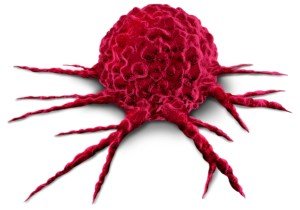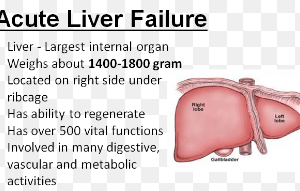Why is cancer more terrifying than heart disease if heart disease kills way more people than cancer? Why is “You have cancer” more frightening than “You have heart disease”?
There are many reasons why “You have cancer” evokes far more fear than “You have heart disease.”
According to the Centers for Disease Control, heart disease kills significantly more Americans every year than does cancer.
Plus, people in general know far more family members and close friends with either coronary artery disease or chronic heart failure than with cancer.
#1 Humor
Heart attacks are often joked about. Even the patient, after recovery, may joke about their heart attack.
If former U.S. vice president Dick Cheney — who’s had several heart attacks — had instead been battling cancer for years, there is no way that late night TV would’ve joked about it.
But every chance he got, former late night host Jay Leno cracked jokes about Cheney’s heart condition.
Heart attacks are made fun of in sitcoms as well.
A classic example is the Fred Sanford character in the ‘70s sitcom “Sanford and Son,” who’s always dramatically faking a heart attack.
There’s even a diner in Las Vegas called Heart Attack Grill — with servers dressed as nurses.
How well would “Cancer Grill” go over with the public?
Heart Attack Grill offers the Quadruple Bypass Burger. There’d be outcry over the Cancer Chemo Burger.
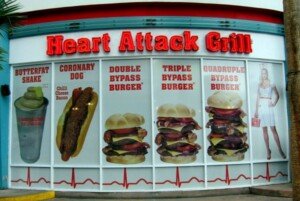
Heart Attack Grill
Ironically, red meat, especially charred on a grill, is strongly linked to some cancers.
#2 Preventive Measures
Doctors will agree that overall, clogged arteries and chronic heart failure can be prevented for many decades with a healthy lifestyle.
But damn, how many times have we heard a story about a person who “did everything right” and still got cancer?
Professional athletes get cancer. Young children get cancer. Runners on vegetarian diets get cancer. People who’ve always avoided the sun get melanoma. People who’ve never smoked get lung cancer.
When a fitness guru needs heart surgery or drops from a heart attack, it’s often the result of a disorder present at birth that was never diagnosed.
#3 The Agonizing Wait
The diagnosis of heart disease can be made very quickly, right there in the doctor’s office via an echocardiogram (which can instantly show how poorly one’s heart is pumping plus other problems) and an EKG, which can indicate coronary artery disease.
A cardiac stress test, too, can right there on the spot detect arterial blockages.
A heart attack can be diagnosed 15 minutes after a blood draw.
But with cancer, the patient must wait up to two weeks for biopsy results.
They must wait for a phone call. Every time the phone rings, their heart jumps out of their chest.
“You have a mass” brings on a terror that “You have a blockage” can’t hold a candle to.
#4 It’s Been Growing Inside You
And yet another frightening aspect of cancer is that it’s something that “grows.”
Sure, blockages in arteries are often spoken in terms of “growth,” but the “growth” of cancer is that of a monster, not of sticky gooey plaque deposits.
You may know that the growth of soft plaque can be halted and even reversed with dietary changes.
But what kind of diet reverses the growth of a brain or liver tumor?
#5 The Element of Surprise

Shutterstock/Twinsterphoto
“When most people think of heart disease they think of someone getting severe chest pain out of the blue,” says Dr. David Beatty, MD, a retired general practitioner with 30+ years of experience and an instructor of general medicine for 20 years.
“Some of these will die suddenly and others will reach hospital and get a clot buster, a stent or maybe need a coronary artery bypass graft.
“The perception is that you either die or you are cured.
“The reality isn’t always as clear as that, but the generalization is true in a lot of cases.
“Some will follow a bumpier course with complications of surgery, failed procedures and chronic heart problems like angina and cardiac failure; I don’t think the public is so aware of this.
“If we were able to choose a way to die I think a sudden heart attack would be one of the preferred ways to go.
“It would avoid some of the unpleasant aspects of very old age such as dementia, disability, dependency on others and chronic ill health from other causes.”
Keep in mind that some people who suffer a life-ending heart attack already had age-related issues that reduced the quality of their life.
From the point of view of the individual who dies suddenly from a heart attack — such as my sister-in-law’s father while playing golf – death came fast, easily and painlessly while doing something he loved.
“Unfortunately, it’s very difficult for relatives to adapt to,” says Dr. Beatty.
“There’s usually no warning and no gradual acclimatization to the prospect of bereavement.
“It happens – bang — and the relatives are unprepared.
“The deceased has often not written a will, and the family is then swamped with extra administrative hassle when they least need it.”
#6 The Chronic Stealthy Nature
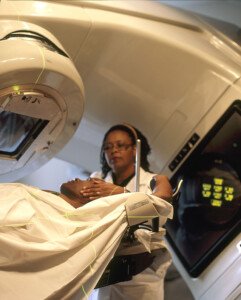
Rhoda Baer/cancer.gov
“Cancer doesn’t usually kill a person out of the blue,” says Dr. Beatty.
“It gradually grows and spreads, so its effects become apparent over months or years.
“Years ago cancer was regarded as a slow painful death sentence.
“With modern medicine this isn’t the case now.
“Some can be cured; some can be suppressed so they don’t change life expectancy, and in some the only treatment is palliation.
“With palliation the main aim is to control symptoms of the disease.
“If a cancer is untreated the person usually suffers increasing ill health.
“The symptoms will vary according to where the cancer starts and where it spreads to.
“When someone is diagnosed with cancer it’s the beginning of a long journey.
“There are likely to be numerous hospital attendances and investigations.
“The treatments may involve surgery, radiotherapy and chemotherapy.
“None of these are pleasant, and they can all cause side effects, adding to the symptoms that the disease is causing.”
A person in the midst of cancer treatment can easily be identified in public: scarce hair or complete baldness, a head wrap, sunken eyes and gauntness, occasionally a chemo pump.
A person with a failing heart, on the other hand, may appear perfectly normal and even in good health.
“Even when someone is cured they often need checkups and investigations for many years and still have the worry that a recurrence may happen.
“It’s a long protracted process. Let’s face it — not many people like having to deal with the medical profession.
“If treatments don’t work there is often a progressive deterioration before dying.
“Patients are scared of all of these things: the disease, the treatments, the hospital appointments, the tests, the uncertainty of cure and the thought of a slow unpleasant death.
“Not many people would choose cancer as their final illness.
“However, relatives are usually forewarned and they can mentally adjust to their loss a little bit at a time.”
#7 Medical Advances
Even though heart disease is America’s No. 1 killer, the advances in cardiac medicine over the past 50 years have been astounding — far more spectacular than any advances made in cancer treatment.
So why is heart disease still the No. 1 killer of many First World nations?
Because obesity has skyrocketed over the past 50 years.
It’s because technology has made people less active.
It’s the proliferation of fast-food and other junk food establishments and the ease at which to obtain this kind of food.
Nevertheless, coronary blockages can be stented right on the spot after the diagnosis.
There are life extending drugs for chronic heart failure, plus other measures that significantly reduce the chance of heart attack such as blood pressure management, reducing sodium and other drug therapies.
But with cancer? It still tends to be hit or miss with drug therapies.
Perhaps one of the most frightening aspects of cancer is that for most kinds such as colon, pancreatic, ovarian and other organ tumors, symptoms begin only once the disease has spread.
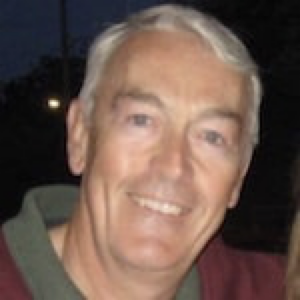 Dr. Beatty has worked in primary medicine, surgery, accident and emergency, OBGYN, pediatrics and chronic disease management. He is the Doctor of Medicine for Strong Home Gym.
Dr. Beatty has worked in primary medicine, surgery, accident and emergency, OBGYN, pediatrics and chronic disease management. He is the Doctor of Medicine for Strong Home Gym.
 Lorra Garrick has been covering medical, fitness and cybersecurity topics for many years, having written thousands of articles for print magazines and websites, including as a ghostwriter. She’s also a former ACE-certified personal trainer.
Lorra Garrick has been covering medical, fitness and cybersecurity topics for many years, having written thousands of articles for print magazines and websites, including as a ghostwriter. She’s also a former ACE-certified personal trainer.
.

